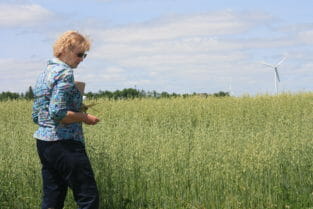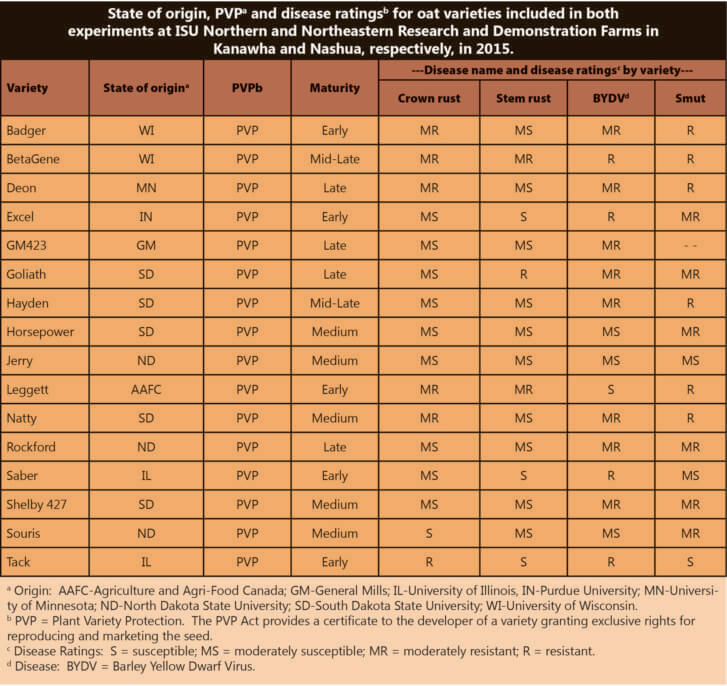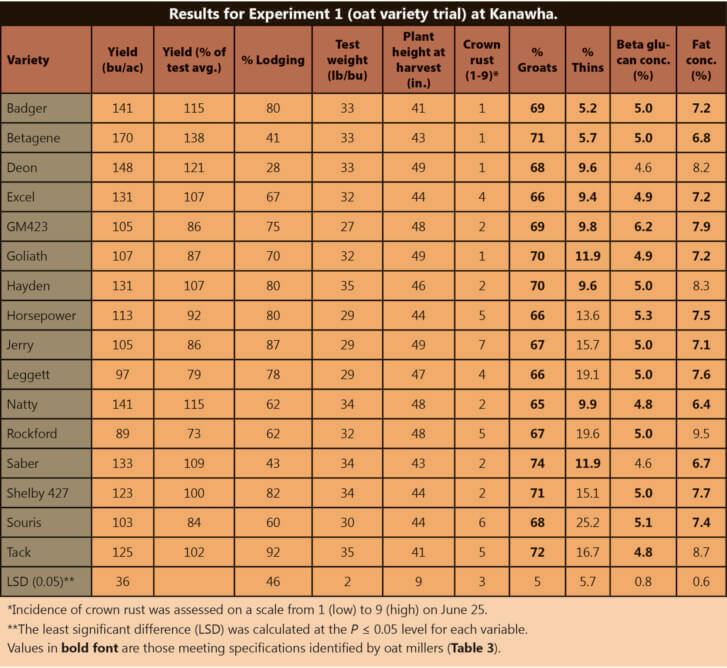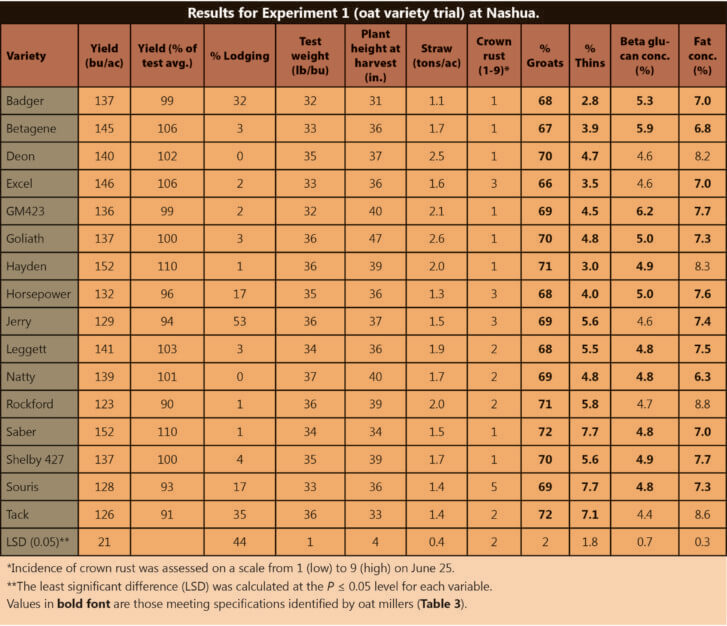How to Choose an Oat Variety

ISU researcher and PFI farmer Margaret Smith shows her oat field to attendees at a field day in 2015.
Maybe you’ve seen the results of the 2015 Oat Variety Trial with PFI and ISU, but are wondering how you can use that data to choose the best oat variety for your farm. ISU researchers (and PFI members) Margaret Smith, Mary Wiedenhoeft and David Weisberger have been studying oats over the past year. The goal of this research is to come up with some up-to-date, Iowa-based extension guidelines for oat production. For this blog, I asked David how you would use variety trial results to choose the best variety for your farm.
“Oats are used in different ways for different producers,” David says. “The #1 most important thing is to recognize why you’re growing oats, and what market they will go to.”
- Do you have livestock that you can feed oats to or use the straw as bedding?
- Is there a food or feed mill near you that you can sell to?
- How confident are you that you can meet test weight specifications for that mill?
- Do you have a local market for straw?
- Is your primary reason for growing oats to establish a clover or alfalfa underseeding?
Answering these questions will be a good start in choosing the variety that works best for you. Once you have that in mind, David says four of the most important things to look for are relative maturity, yield and test weight, rust resistance and lodging.
What Grows Well Where You Are?
Relative maturity and state of origin are important for determining which oat variety is best for your location. Below is the first table from the ISU/PFI oat variety trial. Two indicators of location are the “State of Origin” and “Maturity” columns. Obviously, where the variety was developed is important. But also, when it matures is important.
Maturation date is important for a couple reasons. First, for producers living in the southern part of the state, early-maturing varieties will develop more quickly, the goal being to avoid flowering during hot weather (which can be very detrimental to yields, as oats are cool season crops). For more northern-based farmers, a late-maturing variety leaves a longer window for grain filling, meaning that there would be an opportunity for increasing test weight.
Relative maturity would also be important if your primary goal is establishing a hay crop. If you want to get the oats off as quick as possible to leave more time for hay growth, you might want to choose an early-maturing variety regardless of your location.
Oat Performance: Yield, Test Weight, Straw Yield, Lodging and More
What do you want your oats to do for you? Is test weight important to you? If you are looking to sell to a mill, test weight is likely the most difficult specification to meet, and test weight should be a big consideration. However, if you’re looking to feed the oats on farm or straw for bedding is very important to you, yield (of oats and straw) might be more important.
Lodging is important for a number of reasons. For producers wishing to establish a hay crop, it can be difficult to harvest downed oats without damaging the underseeding. If you’re shooting for high yield, downed oats can create shattering problems and cause excess green material to be brought up through the combine. Below are two more tables from the PFI/ISU trials with performance information:
Keep in mind that these are just two sites from one year. You can see results from other locations around the Midwest and other years in Iowa on our small grains webpage.
One More Consideration: Plant Population
David recommends using the Alberta Seeding Rate Calculator to determine planting rate. For planting earlier, closer to 1 million plants/acre (about 22-24 plants/sq ft) is recommended; for later planting dates, closer to 1.2 million plants/acre (26-28 plants/sq ft) is optimal. See this blog for more info and preliminary results from David’s research.
Oat production can be finicky in Iowa — there are a number of factors you can’t control, like weather. Using a tool like this adds another level of precision, and gives you a little more control over the variables you can control. “The calculator just allows you to be a little more precise than what you’d do normally,” he says.
Calibrating the drill for a precise seeding rate doesn’t only help with more precisely planting oats. Getting out there earlier allows you to identify equipment issues and get ahead of the game for corn and soybean planting.



